
How to Disinfect Your Home After Hosting Guests
May 29, 2024
How to Sanitize Outdoor Areas
July 26, 2024How to Disinfect Your Home After Renovations

How to Disinfect Your Home After Renovations
How to Disinfect Your Home After Renovations. Renovations can greatly enhance the functionality and aesthetics of your home, but they often leave behind dust, debris, and potentially harmful contaminants.
Proper disinfection after renovations is essential to ensure a healthy living environment. This article provides comprehensive guidelines on how to effectively disinfect your home after renovations, helping you maintain cleanliness and hygiene.
Understanding the Need for Post-Renovation Disinfection
Renovation dust and debris can pose significant health risks, including respiratory issues and allergies.
Construction materials, dust, and chemical residues from paints and adhesives can linger in your home, creating an unhealthy environment. Removing these contaminants is crucial to safeguard the health of your household.
Restoring a clean and safe living environment after renovations involves more than just surface cleaning.
Thorough disinfection eliminates germs and bacteria introduced during the renovation process, ensuring that your home is both visually appealing and hygienically safe.
Preparing for Disinfection
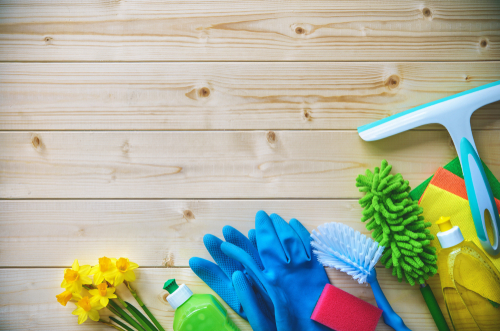
Gathering Necessary Supplies
To effectively disinfect your home, gather essential supplies such as disinfectant sprays, microfiber cloths, sponges, gloves, masks, a HEPA vacuum cleaner, mops, buckets, and appropriate cleaning solutions.
Select disinfectants and cleaning solutions suitable for different surfaces to avoid damage and ensure thorough cleaning.
Safety Precautions
Safety is paramount when disinfecting your home. Wear protective gear like gloves and masks to protect yourself from exposure to dust and chemicals.
Ensure proper ventilation by opening windows and using fans to help disperse any fumes and facilitate drying.
Initial Cleaning Steps
Removing Construction Debris
Begin by removing any large construction debris and materials. Safely dispose of debris and materials according to local regulations to prevent injury and contamination.
Dusting and Wiping Down Surfaces
Renovation dust can settle on all surfaces, necessitating a thorough wipe-down. Use a damp microfiber cloth to wipe down walls, ceilings, and surfaces.
Pay special attention to light fixtures, ceiling fans, vents, window sills, door frames, and baseboards to remove all traces of dust.
Vacuuming
Vacuuming is essential for capturing fine dust particles that may have settled on floors and upholstered furniture.
Use a vacuum with a HEPA filter to ensure maximum dust capture. Vacuum all floors, carpets, and rugs, and use attachments to reach upholstered furniture and curtains. Remember to vacuum under furniture and in hard-to-reach areas.
Deep Cleaning and Disinfection
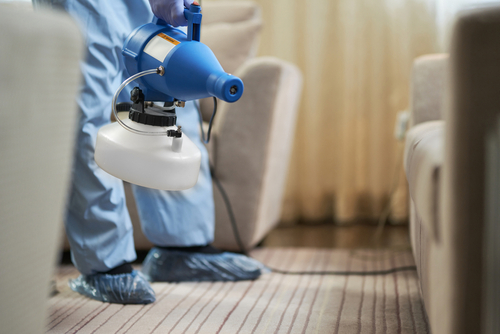
Disinfecting High-Touch Surfaces
High-touch surfaces are prone to harboring germs and bacteria. Disinfect doorknobs, light switches, and handles using a disinfectant spray or wipe.
Allow the disinfectant to sit for the recommended contact time, then wipe with a clean, damp cloth if necessary.
Cleaning and Disinfecting Floors
Floors can accumulate a significant amount of dust and debris during renovations. Sweep or vacuum the floor to remove loose particles, then mop with a suitable cleaning solution.
Disinfect the floor using a disinfectant solution and allow it to air dry completely to prevent mold growth.
Disinfecting Kitchen and Bathrooms
Kitchens
Kitchens are prone to germs and bacteria, making thorough disinfection crucial. Clean countertops, sinks, and appliances with a soapy sponge, then disinfect with a suitable spray.
Wipe down cabinets and drawers inside and out to ensure all surfaces are clean.
Bathrooms
Bathrooms also require rigorous cleaning and disinfection. Clean and disinfect toilets, sinks, and showers, and wipe down mirrors, fixtures, and high-touch surfaces.
Mop the floor with a disinfectant solution to ensure all germs are eliminated.
Air Quality and Ventilation
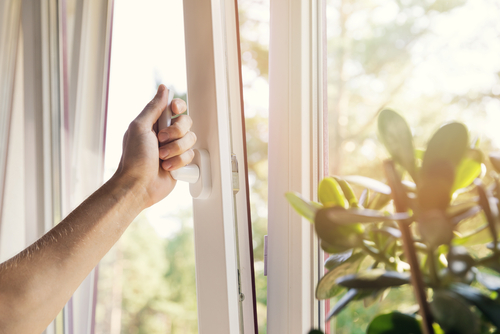
Improving Indoor Air Quality
After renovations, improving indoor air quality is vital to remove airborne dust and contaminants. Use air purifiers with HEPA filters to capture fine particles.
Increase ventilation by opening windows and doors and running fans to circulate air and speed up the drying process.
Cleaning Air Vents and Filters
Air vents and HVAC filters can harbor dust and allergens. Remove vent covers and clean them with soapy water, then vacuum inside the ducts to remove dust buildup. Replace HVAC filters with high-quality HEPA filters to maintain clean air circulation.
Specialized Cleaning for Different Surfaces
Carpets and Upholstery
Deep cleaning carpets and upholstery is essential to remove embedded dust and allergens.
Vacuum thoroughly with a HEPA vacuum cleaner, then use a steam cleaner or professional carpet cleaning service for a deeper clean. Allow carpets and upholstery to dry completely to prevent mold growth.
Windows and Blinds
Windows and blinds can accumulate dust and grime during renovations. Wipe down window frames and sills with a damp cloth, clean window panes with a glass cleaner, and dust or vacuum blinds to remove all traces of dust.
Hard Surfaces (Granite, Marble, Tile)
Different hard surfaces require specific cleaning solutions to avoid damage. Wipe down surfaces with a damp cloth to remove dust, use a suitable cleaning solution for the material, and disinfect with an appropriate disinfectant spray.
Additional Tips for Effective Disinfection
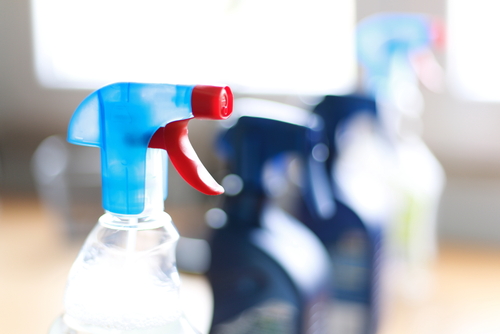
Non-toxic, eco-friendly disinfectants are safer for your home and the environment. Choose products that are effective yet gentle on surfaces and safe for household members.
Maintaining proper ventilation during and after cleaning helps ensure thorough drying and prevents the buildup of fumes. Open windows, use fans, and maintain airflow to keep your home fresh and clean.
Regular maintenance is crucial to keeping your home clean and germ-free post-renovation. Establish a cleaning and disinfection schedule based on usage and household needs to ensure consistent hygiene.
Common Mistakes to Avoid
Using Harsh Chemicals on Sensitive Surfaces
Harsh chemicals can damage sensitive surfaces like granite, marble, and stainless steel. Opt for alternatives and safer cleaning options to preserve the integrity of your surfaces.
Ignoring Manufacturer Instructions
Failure to follow care instructions specific to surfaces and materials can cause damage. Always read and adhere to manufacturer guidelines to maintain the quality and longevity of your home’s features.
Neglecting Hard-to-Reach Areas
Cleaning and disinfecting hard-to-reach areas, such as behind appliances and under furniture, is essential. Use long-handled brushes, flexible cleaning tools, and move appliances periodically for a thorough clean.
Safe Practices and Precautions
Wearing gloves and masks while disinfecting protects you from exposure to dust and chemicals. Follow safe handling and storage guidelines for disinfectant products to ensure your safety.
Use separate cleaning tools for different areas to prevent cross-contamination. Maintain separate cloths, sponges, and brushes for different surfaces to ensure effective disinfection.
How to Disinfect Your Home After Renovations – Conclusion
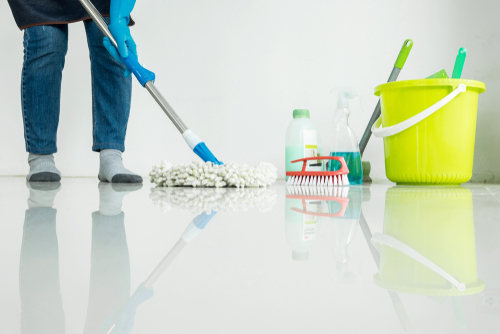
Disinfecting your home after renovations is crucial for maintaining a clean and healthy living environment. Follow the outlined tips and practices to ensure thorough disinfection.
Regular maintenance and disinfection enhance hygiene and safety, contributing to the overall well-being of your household. Get started today!
Are you looking for professional and reliable disinfection services in Singapore? Contact us today!




